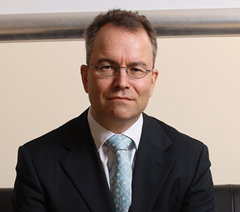Continuous innovation: Petri Lehto interview
 Finland has developed a model for innovation with lessons for other small economies. Petri Lehto, Head of Innovation at Finland’s Ministry of Employment and the Economy, talks to Owen McQuade about the success of Finnish innovation policy.
Finland has developed a model for innovation with lessons for other small economies. Petri Lehto, Head of Innovation at Finland’s Ministry of Employment and the Economy, talks to Owen McQuade about the success of Finnish innovation policy.
Innovation fits with the Finnish character according to Petri Lehto, Head of Innovation at Finland’s Ministry of Employment and the Economy: “Expect the worst and solve the problems.” The Finns regard themselves as problem- solvers, which Lehto believes comes from their geographical location in the North, where survival in the cold has always been a challenge.
Finland developed a model for innovation over the past 30 years, primarily to bring its basic industries such paper-making up the value chain. With the success in innovation policy there has been a boom in Finnish manufacturing. There have been other factors in driving this success, including a settled labour market.
Focusing on technology policy in the 1980s laid the foundation for building an R&D infrastructure in the country. Lehto says that hitting clear milestones every five years was an important aspect of this process.
Finland’s social mobility and “the values in our society” fostered an openness that helped collaboration and “when you believe in the future, then you assume that investing in skills will be positively rewarded.”
When asked what are the important factors in the Finnish model, Lehto replies: “Consistency. Working together. Investing in the future, particularly in education. If I had to pick one factor it would be education.”
Partnership is crucially important, between government and the private sector. Lehto emphasises that it is important that the private sector in Finland acknowledged that the public sector had a role to play in nurturing innovation. Political will was also important. Despite having numerous smaller parties and changing coalition administrations, innovation was always a priority and there was good continuity in policy between the changing coalition governments. As a way of showing the way forward to the private sector “we [government] kept investing even in the difficult times.”
R&D expenditure has increased each year, with the exception of 2009 when there was a small dip due to the global financial crisis. Lehto also observes that in the early years, most of the R&D expenditure was by the public sector but today the majority of the spend is by the private sector.
Lehto says that although the Finnish model for innovation has been very successful, it is entering “a difficult phase with many challenges ahead”.
“Finland like many European countries, is locating operations in the Far East with outsourcing.” Lehto highlights Nokia as an example of this trend. The company now makes its mobile hand sets in China. “However, we have a good infrastructure for innovation in Finland and we have observed that most of Nokia’s higher value operations are still in Finland. The R&D infrastructure we have developed has been crucial for this.”
One trend Lehto has observed is the increase in R&D activity in the services sector. “This is much more difficult than R&D in manufacturing.”
“It is difficult in that you have to open up the innovation system within companies. R&D used to be undertaken in laboratories, where now it gets very fussy, with so many things impacting on the innovation process.”
“You need to concentrate on how you work with your customers. The non-tech elements make it more difficult to understand the innovation process.”
When asked what one piece of advice would he give to policy-makers, Lehto replies: “I would underline consistency. I would underline continuous investment.”






